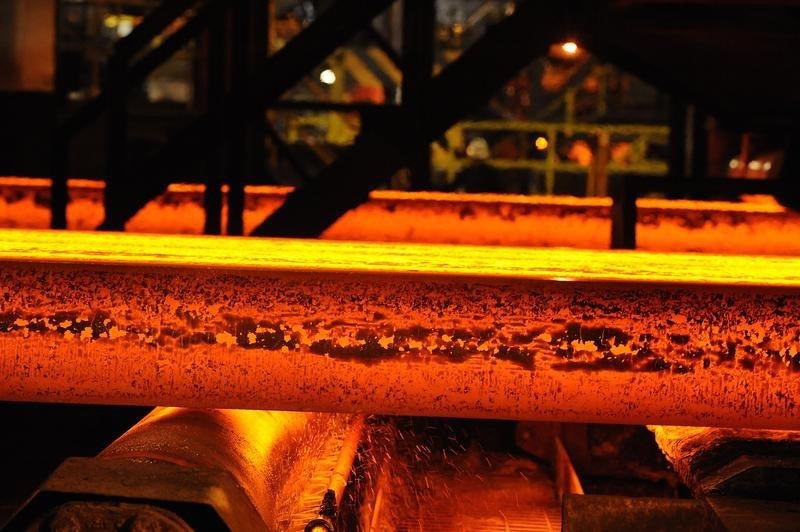(The opinions expressed here are those of the author, a columnist for Reuters.)
By Clyde Russell
SINGAPORE, April 15 (Reuters) - - China's move to scrap export subsidies on a range of products, most notably steel, means very little and is quite significant.
If that sounds contradictory, it's because it's likely the deal won't really have much of a practical impact on the level, or competitiveness of Chinese steel exports.
But at the same time it pays not to underestimate the symbolic and sentiment-changing nature of a deal in what has become an extremely contentious part of world trade.
As China started exporting some of its massive steel surplus, the global response has been for governments to impose, or threaten, increasing anti-dumping tariffs.
Steel makers outside China have also been vocal in lobbying their governments and the public for protection from the Chinese juggernaut, and have probably been winning the public relations battle even though economic logic and experience show that protecting weak industries seldom works.
That's why the measures announced on Thursday in Washington go a long way to showing that perhaps the parties involved are now more prepared to behave like adults rather than kids throwing their toys out of cot.
China ended a program which provided export subsidies of some $1 billion over three years to Chinese companies in seven economic sectors, the U.S. Trade Representative's office said.
The sectors covered include advanced materials and metals, which account for specialty steel and aluminium, as well as specialty chemicals and textiles. immediate reaction from several industry commentators is that the end of subsidies isn't material enough to matter in the long run, even though it may boost exports of steel and aluminium in the short term as Chinese producers seek to maximise revenue before the government assistance ends.
OUTPUT, EXPORTS SURGE
Certainly, Chinese steel producers seem to be ramping up their efforts to export, notwithstanding the imposition of tariffs and duties by several countries, including India.
Steel products exports were 9.98 million tonnes in March, up 23.1 percent from the previous month, taking the first quarter's increase over the same period in 2015 to 7.9 percent, according to customs data released on April 13.
Steel production rose to a record 70.65 million tonnes of steel in March, up 2.9 percent from the same month in 2015, the National Bureau of Statistics said on Friday. output was 3.2 percent lower in the first quarter at 192.01 million tonnes, as a result of a soft start to the year.
Exports of unwrought aluminium and products also rebounded strongly in March, jumping 50 percent from the prior month to 420,000 tonnes. However, they are still down 11 percent in the first quarter as a result of a weak first two months.
What the trade and output data seem to be showing is that China's steel and aluminium sectors kicked up a notch in March on the back of a modest improvement in prices and the demand outlook for the sector as the government boosts infrastructure spending.
But it also shows that much of the increase in production was simply exported, which isn't exactly a bullish signal for China's steel and aluminium sectors.
The jump in exports also show the challenges for the rest of the world in dealing with the dominance of China's steel sector, which accounts for roughly half of the world's output.
The decision by Tata Steel TISC.NS to effectively walk away from its British plants and the placing into administration of Australian producer Arrium ARI.AX reflect how once-resilient steel industries are struggling to compete with China.
The deal to end subsidies does little to reduce the major advantages the Chinese have over their counterparts, particularly those in high-wage Western countries.
Chinese steel producers mostly enjoy cheaper energy, labour and regulatory charges such as taxes and rates.
This means China's exports are more than likely to remain at costs many steel producers in the rest of the world will find hard to match.
But the decision to talk and reach even a modest deal shows that the potential exists to reach a state of affairs acceptable to most players in the industry.
The alternative is to go down the path of rising trade tensions, with anti-dumping measures being matched tit-for-tat in an escalating war with no winners.
The U.S.-China agreement gives hope that wiser heads can prevail, and therein lies its significance. (Editing by Himani Sarkar)
